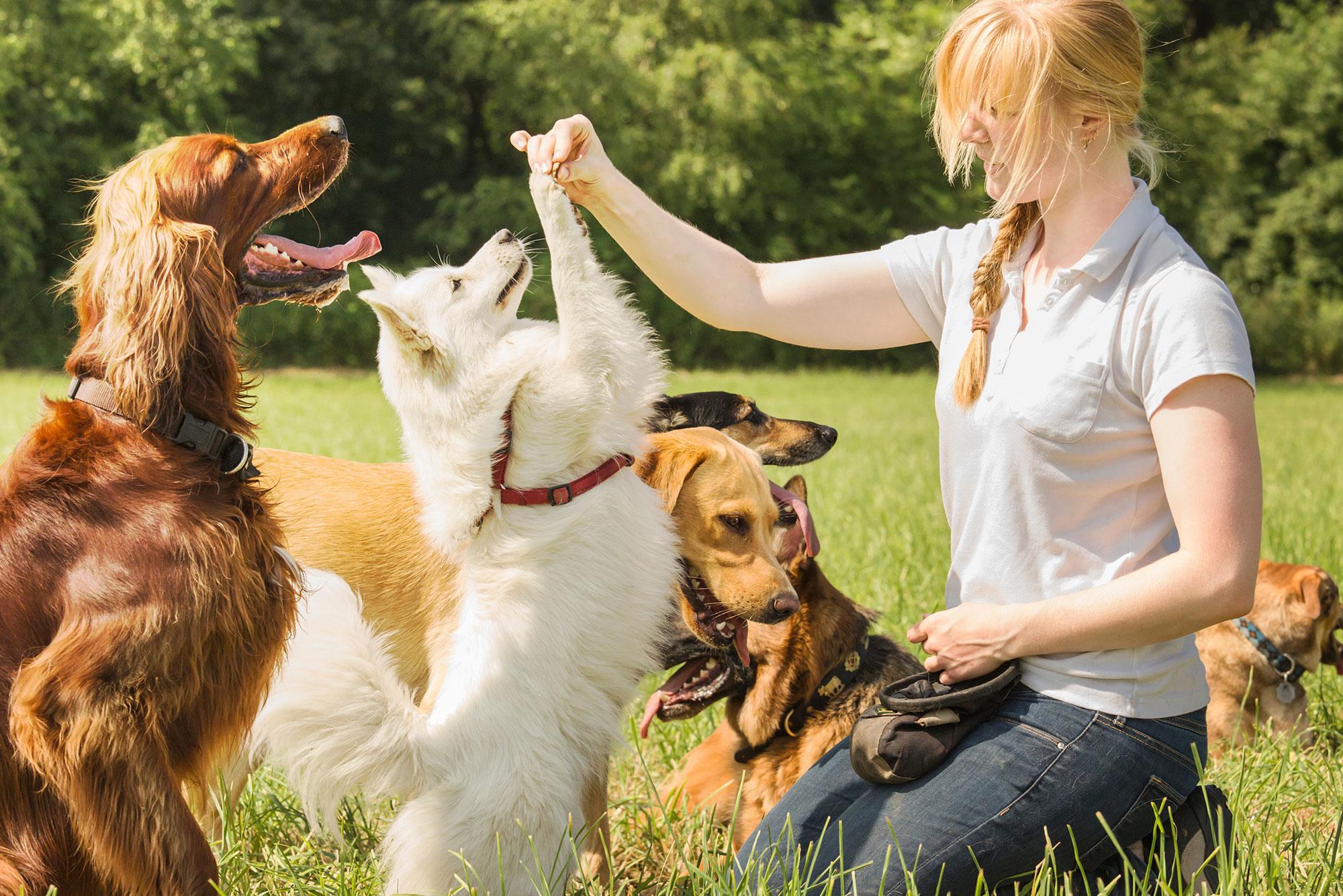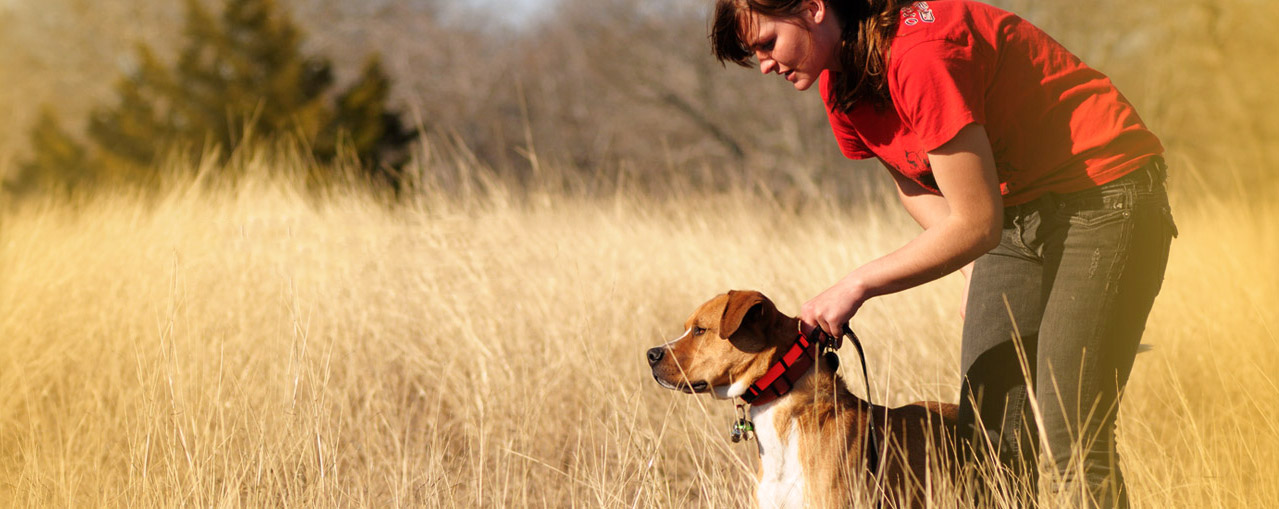Typical Behavioral Issues and Their Solutions in Dog Training
Typical Behavioral Issues and Their Solutions in Dog Training
Blog Article
Important Tips for Effective Dog Training: An Overview for Pet Owners
Effective pet dog training is a diverse process that requires a critical technique tailored to both the family pet's personality and the owner's goals. Comprehending how to navigate these obstacles can considerably enhance the training experience, inevitably changing the relationship between proprietor and pet dog.
Understanding Dog Actions
Comprehending pet dog actions is vital for effective training and cultivating a harmonious connection between pooches and their owners. Pets connect primarily via body language, vocalizations, and actions, making it vital for proprietors to translate these signals properly. Recognizing a pet dog's position, tail setting, and ear orientation can give understandings into its mood. A wagging tail does not always indicate joy; it can likewise signal enjoyment or anxiousness.

Socialization plays a significant role in dog actions; direct exposure to various atmospheres, individuals, and other pets can dramatically impact a dog's character. Variables such as breed features and individual temperament ought to lead training methods, as some breeds might have details behavioral traits that necessitate tailored techniques. By understanding these aspects, proprietors can develop a helpful setting that urges favorable behavior, resulting in effective training outcomes and a deeper bond with their family pets.
Developing Constant Commands
Efficient interaction with your pet dog begins with developing constant commands. This foundational component of training is vital for cultivating understanding between you and your pet. Uniformity in the commands you utilize makes sure that your pet dog can reliably associate certain words or expressions with the desired habits.
When picking commands, choose clear, unique words that are very easy to say and separate from one another. Stay clear of utilizing similar-sounding commands that may confuse your pet. Using "rest" and "remain" is ideal, however "sit" and "hit" can lead to misunderstandings.
Furthermore, keep the same tone and volume for each command. Pets are delicate to singing cues, so differing your tone can create complication.
It is equally important to ensure that all household members get on the very same web page concerning the commands made use of. A united front in command use will prevent blended signals and strengthen the knowing process.
Favorable Reinforcement Strategies
The power of positive support in pet dog training lies in its capacity to motivate desired actions through benefits and appreciation. This method is based in the concept that habits complied with by desirable end results are more probable to be repeated. By integrating positive reinforcement into your training program, you can effectively form your dog's actions in a constructive fashion.
To execute favorable reinforcement, it's necessary to recognize what motivates your canine, whether it be deals with, toys, or verbal praise. When your canine performs a desired action, such as remaining on command, immediately award them with a treat or affection. This organization between the command and the favorable end result enhances their understanding.
It's critical to timing the benefits properly; delivering the support within secs of the desired behavior assists your pet dog make the connection (dog training). Furthermore, uniformity is essential-- make certain that all member of the family use the same commands and benefit systems to stay clear of confusion

Progressively, you can minimize the regularity of treats as your pet dog discovers the actions, use this link transitioning to commend or intermittent incentives. This method not just fosters a solid bond in between you and your pet yet likewise advertises a see this here favorable understanding environment, making educating a pleasurable experience for both.
Socialization and Interaction
Continually exposing your dog to a selection of settings, people, and various other animals is crucial for their social development. Socializing ought to begin early, preferably throughout the critical home window of 3 to 14 weeks, when puppies are most receptive to brand-new experiences. Nonetheless, older pet dogs can likewise gain from continuous socializing initiatives.
Introduce your pet to various setups, such as parks, pet-friendly stores, and city areas. This direct exposure helps them adapt to numerous stimulations, decreasing anxiousness and fear feedbacks. Urge positive communications with various other dogs and people, ensuring that these encounters are regulated and risk-free to foster confidence.
Use structured playdates with well-mannered dogs, as this can enhance your canine's social abilities and instruct them ideal habits. Obedience classes and training sessions also offer superb opportunities for socializing, allowing your canine to connect with others in a monitored browse around these guys environment.
Display your pet's body movement throughout communications, as this will certainly help you assess their comfort degree. Slowly raise direct exposure to more tough situations while making sure that each experience is positive. A well-socialized pet is much more most likely to show well balanced actions, making them a delight to have in any type of setup.
Dealing With Usual Training Difficulties
Every pet owner will certainly encounter training challenges at some factor, no matter their pet dog's age or socialization level. Recognizing usual problems such as stubbornness, diversions, and fearfulness can assist in creating effective strategies for improvement.

Progressively introduce interruptions as the pet ends up being extra competent in commands. Short, frequent training sessions are likewise efficient in preserving focus.
Terror can prevent a pet's knowing process. Gradual desensitization to the source of anxiety, coupled with positive reinforcement, can aid reduce anxiety. Persistence is crucial; never ever compel a pet into a circumstance that triggers distress, as this may intensify the issue.
Eventually, understanding and addressing these common obstacles with a structured technique will foster an extra efficient training experience, strengthening the bond in between canine and proprietor while advertising efficient learning.
Verdict
In summary, effective dog training relies upon a comprehensive understanding of canine habits, the establishment of consistent commands, and the application of favorable reinforcement methods. Socialization plays a crucial function in developing well-adjusted family pets, while addressing typical training challenges calls for patience and versatility. By applying these vital techniques, pet dog owners can cultivate a strong bond with their canines and advertise desirable behaviors, ultimately causing an unified partnership in between humans and their canine buddies.
Recognizing pet behavior is crucial for effective training and promoting a harmonious partnership in between dogs and their proprietors.Socializing plays a significant role in pet dog habits; direct exposure to different atmospheres, individuals, and various other pets can dramatically impact a pet dog's personality.The power of positive reinforcement in canine training lies in its capability to motivate preferred habits via incentives and appreciation. By incorporating favorable reinforcement into your training program, you can successfully form your dog's habits in a positive fashion.
In summary, effective dog training depends on an extensive understanding of canine actions, the facility of regular commands, and the application of favorable support methods.
Report this page